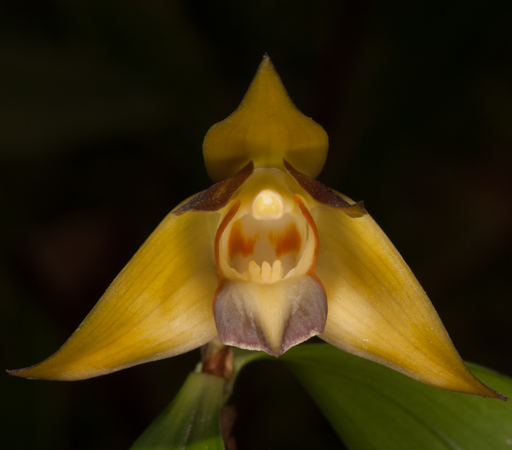Each plant family has its own characteristics. Knowing a few of those will help in identifying each family and even the species. But, following the unique features of flowers of each family helps in zeroing the identity much easier. For example, Asteraceae with rings of sepals, petals, stamens and pistil in order; Convolvulaceae with a star pattern on its corolla; Liliaceae with all flower parts in multiples of threes.
In orchids, 3 sepals, 3 petals with one of them modified as lip, the unique column and the not so common presence of spur.
However, there are a few orchid species that defy the general rule – Corybas himalaicus (King & Pantl.) Schltr., is an example. Its flower is without any petals, and with 2 spurs.
The solitary flower of the plant is with unequal sepals – helmet shaped dorsal sepal, filiform (very narrow) shaped lateral ones, and a large lip.
The genus Corybas is also known as Helmet orchids due to its unique shaped dorsal sepal.
Corybas himalaicus (King & Pantl.) Schltr., is the only species in the genus Corybas found in India.




Post 50 – 17/January/2021.





























